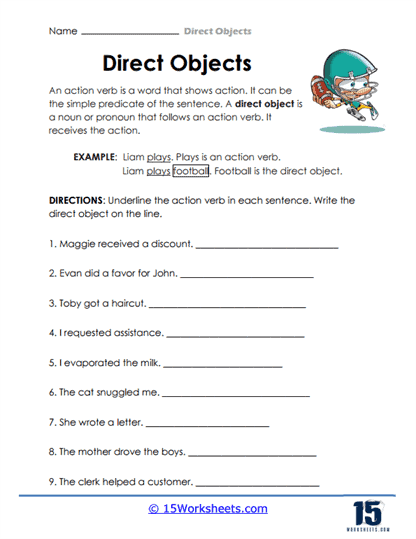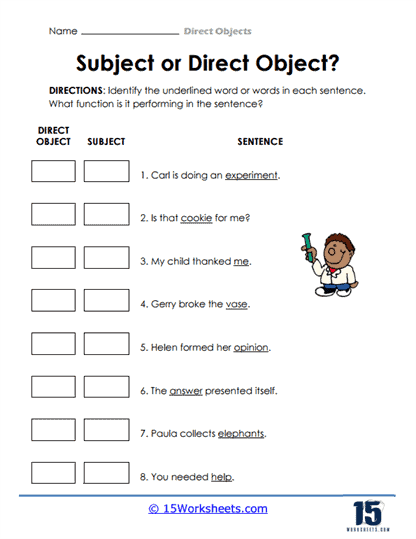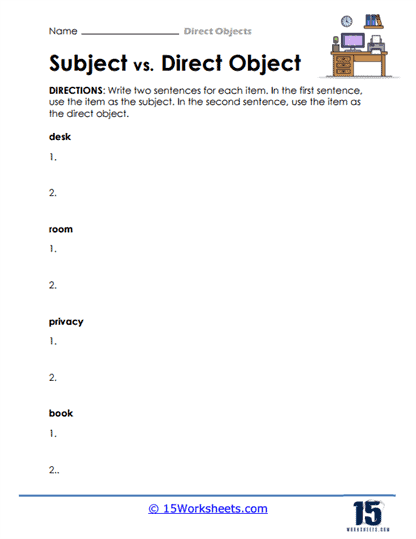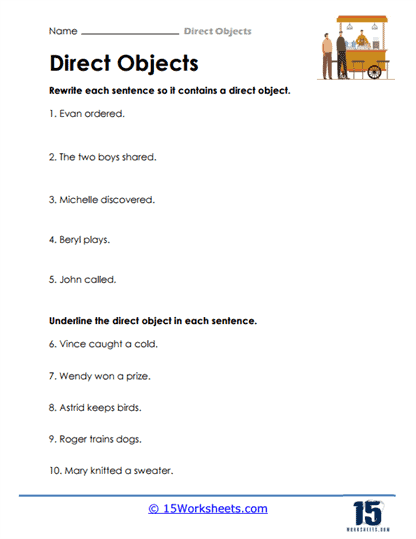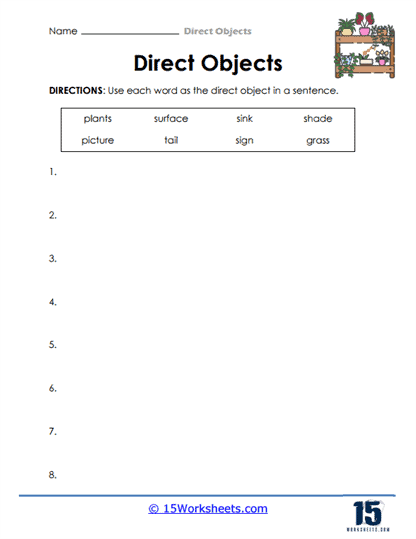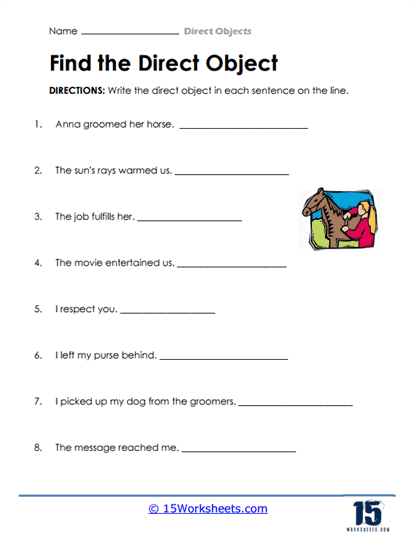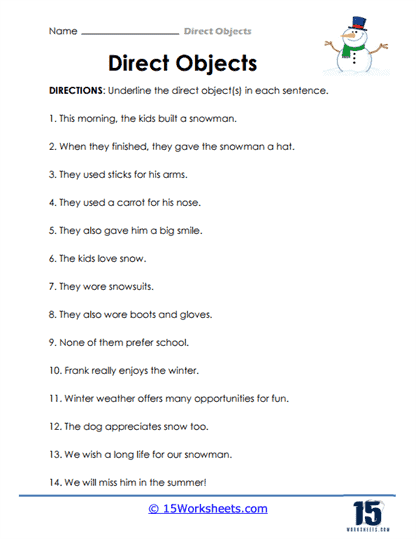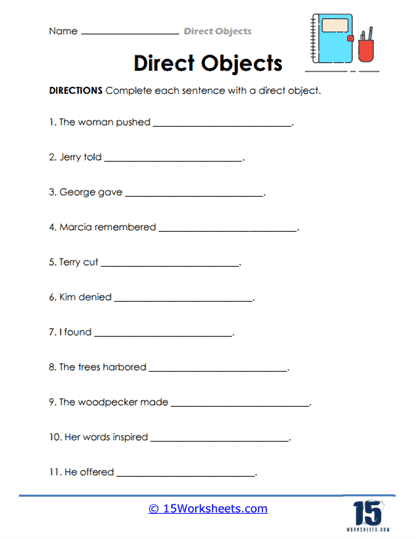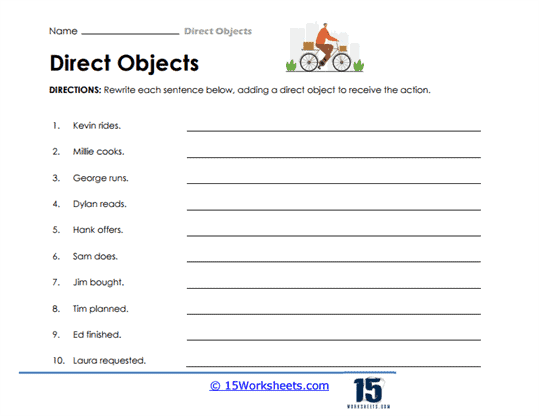Direct Objects Worksheets
All About These 15 Worksheets
These direct objects worksheets are created to help students understand and practice the use of direct objects in English. Direct objects are nouns or pronouns that receive the action of a transitive verb, and they play a crucial role in making sentences meaningful and complete.
These worksheets include a variety of exercises to help students identify and use direct objects correctly. Some examples of these exercises include:
- Sentence analysis – Students analyze sentences and identify the direct object, subject, and action verb.
- Sentence transformations – Students rewrite sentences using a different direct object.
- Writing exercises – Students write their own sentences using direct objects.
In addition to these exercises, some of these worksheets also include explanations and examples of direct objects in sentences. These are ideal for teachers introducing this topic to students before they move on to the other worksheets in this collection which require further knowledge and mastery of direct objects.
By completing these worksheets, students will:
- Identify the direct object, action verb, and subject in a sentence and grasp their function;
- Use nouns as either the subject or the direct object in their own sentence;
- And construct their own sentences that use direct objects correctly.
In summary, these worksheets on direct objects provide students with an opportunity to practice and reinforce their understanding of this important aspect of English grammar. By using these worksheets, students can improve their ability to write and speak more accurately and effectively in English, and become more confident and proficient in their language skills.
What are Direct Objects and why do they matter?
A direct object is a noun or pronoun that receives the action of a verb in a sentence. It answers the question “what” or “whom” after the verb.
- For example, in the sentence “The dog chased the cat,” “cat” is the direct object because it receives the action of the verb “chased.”
- Another example is in the sentence “I bought a book,” “book” is the direct object because it receives the action of the verb “bought.”
Direct objects are usually found in sentences with transitive verbs, which are verbs that transfer the action to a direct object. Some examples of transitive verbs include “give,” “hit,” “eat,” “kick,” “write,” and “paint.” To determine if a word is a subject, action verb, or direct object, follow these steps:
- Identify the subject by asking “who” or “what” is doing the action in the sentence.
- Identify the action verb by asking “what” is the subject doing in the sentence.
- Identify the direct object by asking “who” or “what” is receiving the action of the verb.
By following these steps, you can determine the role of each word in a sentence and gain a better understanding of how sentences are structured in English.
Identifying direct objects in a sentence is important because it helps to clarify the meaning of the sentence and make it more specific. Direct objects are an essential part of English grammar and are used in everyday conversation and writing.





